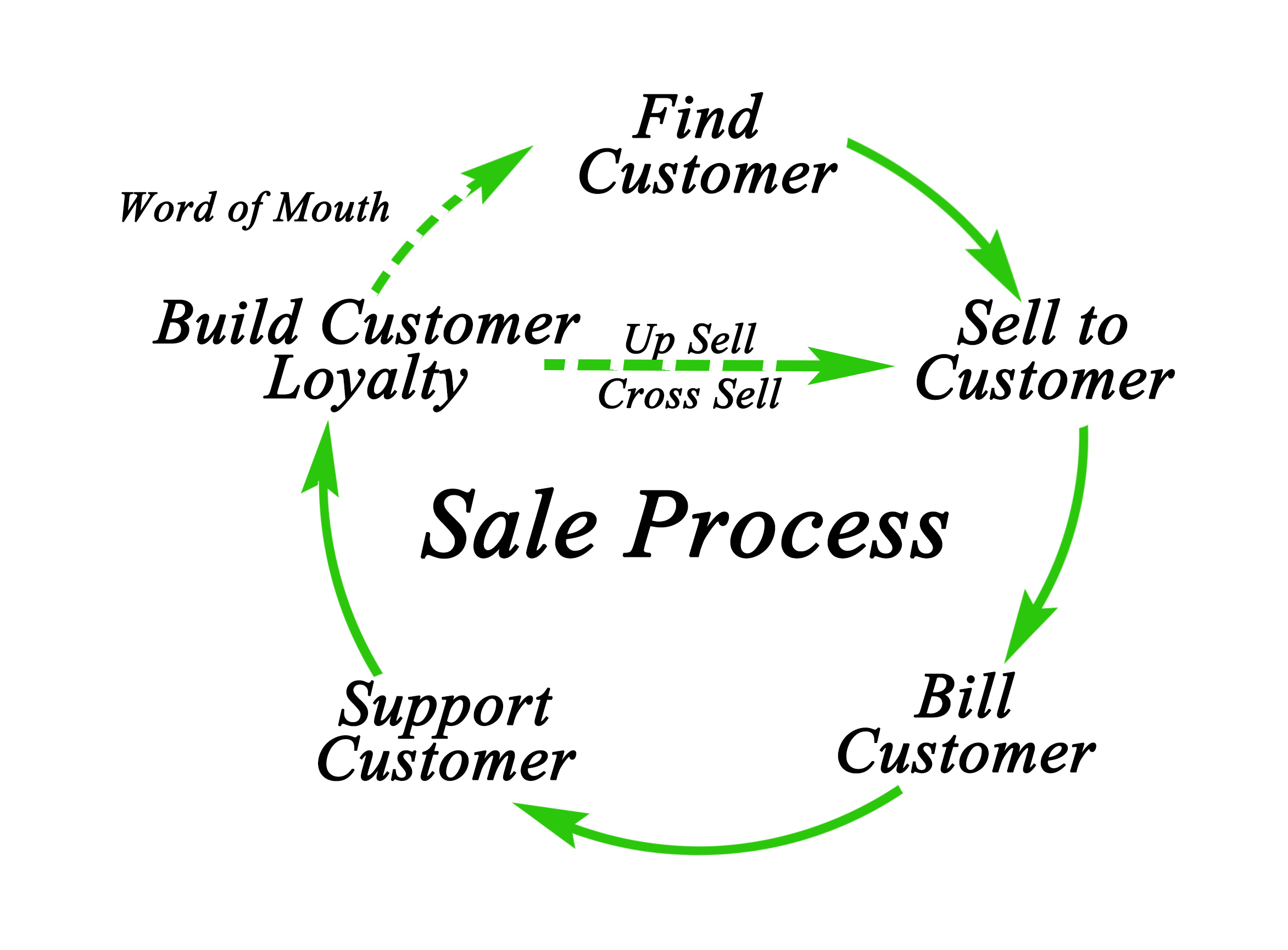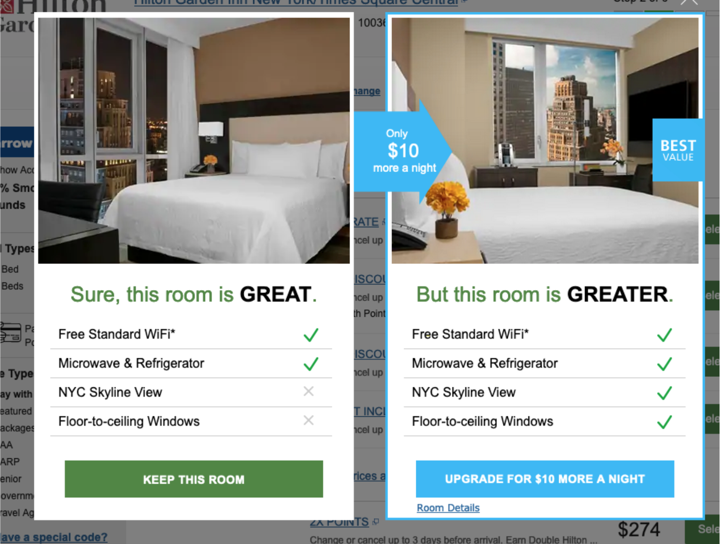1. Personalization during booking:
Use a CDP to track a guest's browsing behavior on your website and show them personalized room recommendations, offers, and amenities based on their interests and past booking history.
For example, if a guest has previously viewed family-friendly rooms, you could show them a pop-up offering a discount on their next stay if they bring their kids.
2. Up-sell/cross-sell opportunities:
Use a CDP to identify guests who are likely to be interested in upgrading their room, booking spa treatments, or participating in tours and activities. Then, you can send them targeted email or SMS campaigns with personalized offers.
What are the benefits of up-selling in hotels?
When it comes to up-selling, knowing your customer and selling it at the RIGHT time is everything you need to focus on. Moreover, in LEO CDP, you have a full customer profile of their likes, dislikes, etc. and offer them something which they are fond of.
Let’s look into the benefits of doing so:
- Higher profitability.
- Increased revenue.
- Greater utilization of hotel facilities.
- Better guest experience.
- More hotel occupancy.
- Hence, the beauty of up-selling is it allows you to enhance your profits without even having to spend huge amounts of money on marketing activities.
3. Offer booking alternatives:
If a guest abandons their booking during the checkout process, use a CDP to send them a targeted email or SMS with a reminder to complete their booking. You could also offer them an alternative, such as a later check-in time or a different room type.
Example of email for "Friendly Reminder: Complete Your Booking & Secure Your Stay at [Hotel Name]!"
Hi [Guest Name],
We noticed you started booking your stay at [Hotel Name], but didn't quite finish!
No worries, we've saved your room selection and details so you can pick up right where you left off.
Just click this link to return to your booking: [Link to booking page]
Here's a quick peek at what awaits you at [Hotel Name]:
- [Highlight a key selling point of the hotel, e.g., stunning ocean views, luxurious spa treatments, delicious on-site dining]
- [Another key selling point, e.g., convenient location, family-friendly activities, spacious rooms]
- [A limited-time offer or discount, if applicable]
Warmly,
The Team at [Hotel Name]
P.S. If you have any questions or need help completing your booking, feel free to call us at [Phone number] or reply to this message. We're always happy to help!
Note:
- You can personalize the message further by mentioning the specific room type or dates the guest selected.
- Feel free to add emojis to make the message more friendly and engaging.
- Be sure to include a clear call to action, such as clicking the link or replying to the message.
4. Send booking reminders:
Use a CDP to send automated email, Push Notification or SMS reminders to guests who have upcoming reservations. This can help to reduce the number of no-shows and increase revenue.
5. Combine onsite and offsite behavior to provide a more personalized experience:
Use a CDP to track a guest's behavior both on your website and on other websites and social media platforms. This can help you to build a more complete picture of their interests and preferences, and you can use this information to personalize their experience at your hotel.
6. Encourage repeat bookings with personal special offers :
Use a CDP to identify guests who are likely to become repeat customers. Then, you can send them targeted email or SMS campaigns with special offers (Coupon & Promo Codes) and incentives to encourage them to book their next stay at your hotel.
7. Improve guest satisfaction:
Use a CDP to track guest feedback and identify areas where you can improve your services. You can then use this information to make changes that will make your guests happier and more likely to return.
8. Personalize on-property experiences:
Use a CDP to send personalized welcome messages to guests when they arrive at your hotel. You can also use a CDP to recommend restaurants, activities, and other amenities that are likely to be of interest to each guest.
Examples of Mobile App Push Notification
8.1. The Standard Welcome:
Notification: Welcome to [Hotel Name], [Guest Name]! Your home away from home awaits. ✨
Image: A warm, inviting photo of the hotel lobby or entrance.
8.2. The Location-Specific Welcome:
Notification: ️ Hey [Guest Name], the beach is calling! ♀️ Explore the beauty of [City/Town] from your comfy room at [Hotel Name].
Image: A stunning picture of the local beach or landmark.
8.3. The Activity-Focused Welcome:
Notification: Ready to paint the town red, [Guest Name]? Catch the opening night of [Show/Event] tonight, just steps from [Hotel Name]!
Image: An exciting photo of the show or event.
8.4. The Personalized Amenities Welcome:
Notification: Unwind with a complimentary glass of bubbly at the rooftop bar, [Guest Name]! Your view awaits at [Hotel Name].
Image: A tempting photo of the rooftop bar with a breathtaking view.
8.5. The Family-Friendly Welcome:
Notification: Fun for all ages starts now, [Guest Name]! Dive into the splash pad and game room at [Hotel Name] with your little adventurers.
Image: A happy family enjoying the hotel's pool or game room.
Bonus Tip:
- Include a call to action in your notification, like "Download our app for exclusive deals!" or "Visit the front desk for your welcome amenity!"
- Remember to personalize the welcome message with the guest's name and specific details relevant to their stay. By doing so, you'll create a warmer, more memorable welcome experience for your guests.
In summary
Forget cookie-cutter experiences. LEO CDP empowers hotels to craft personalized journeys for every guest, turning fleeting stays into loyal fans. Imagine this:
- Know your guests like family: Unify data from reservations, website visits, emails, and more to paint a 360-degree portrait of each guest's preferences.
- Say goodbye to guesswork: Predict which guests crave an ocean view upgrade, who'd love a surprise birthday cake, and who's a potential influencer worth wooing.
- Personalization beyond compare: Cater emails, app notifications, and on-site recommendations to individual tastes and interests. Think exclusive spa deals for wellness enthusiasts, local adventure recommendations for explorers, and family-friendly activities for parents.
- Revenue soaring, no-shows snoring: Targeted up-sell/cross-sell campaigns convert abandoned bookings and entice guests with irresistible offers on spa treatments, room upgrades, or tours.
- Loyal champions, not just one-night stands: Nurture repeat business with personalized thank-you gestures, exclusive loyalty program perks, and special offers tailored to past stays.
LEO CDP isn't just about data. It's about weaving magic into every guest's experience, building emotional connections that turn one-time visitors into lifelong brand ambassadors.





